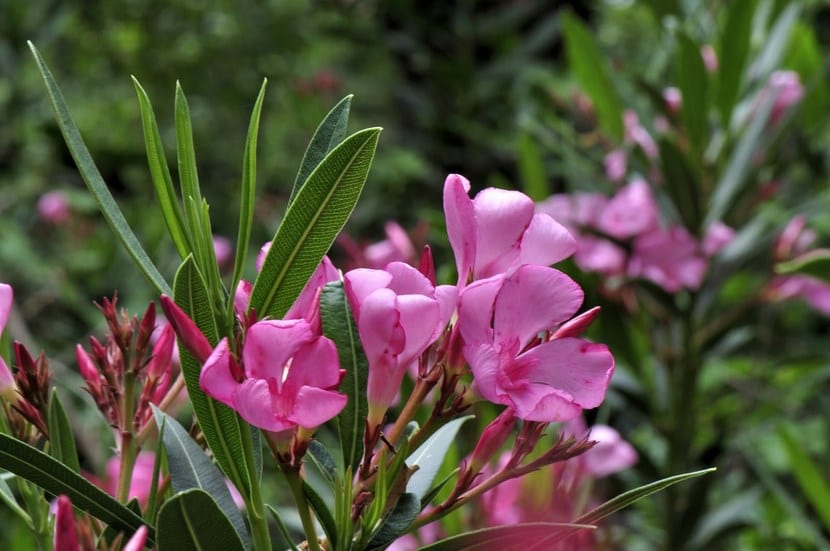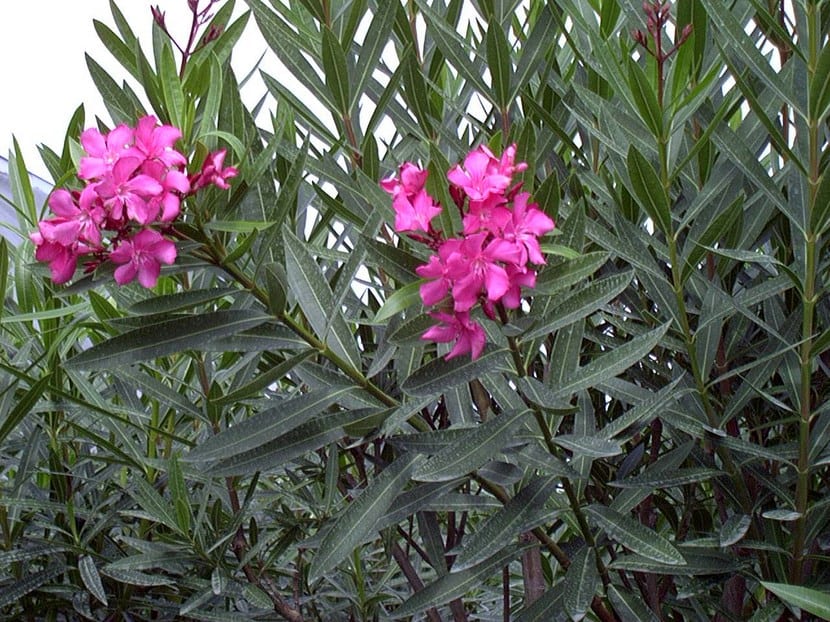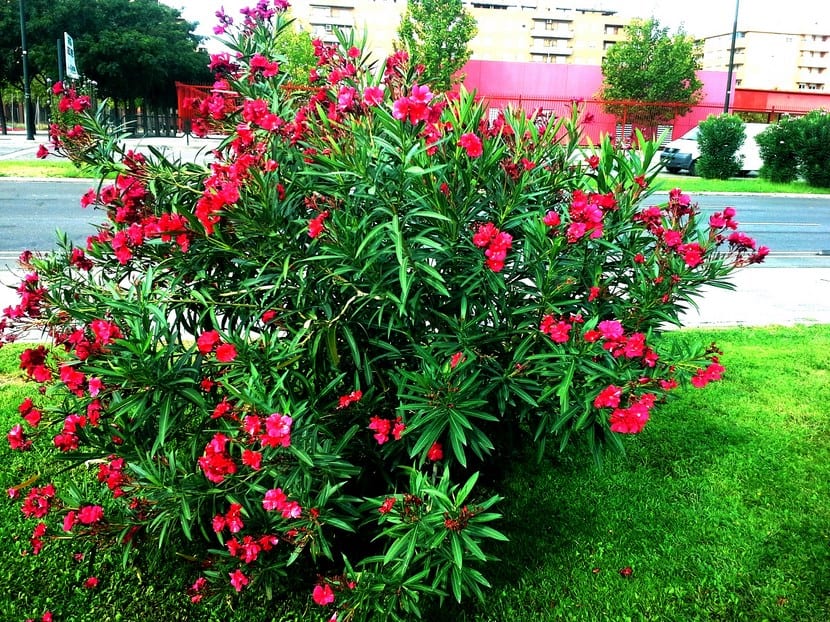
If you are looking for highly attractive shrubs, you can find those species that bloom every year. They are ideal for covering large spaces as their flowers are showy and form a differentiated corner.
There are many species and varieties of shrubs, some are used for hedges while others are ideal to place in a special place in the garden or to cover areas with little grass. Today we will dedicate ourselves to knowing the graces of the Oleander, one of the most showy shrubs that you can find thanks to its beautiful pink flowers that abound during the summer season.
Characteristics of the Oleander

La Oleander It is a shrub that is also known as Pink laurel or Balandre although its scientific name is none other than nerium olander. It is native to the Mediterranean basin so you can find it in almost all regions of the Mediterranean.
In this evergreen shrub who likes water and that's why its name because the Latin word Nerium derives from Neros, which means "Wet" in Latin. The flowering of the Oleander occurs in the spring although it is long as it continues until the beginning of autumn.
It can reach up to 6 meters in height and that is why it is widely used as a hedge as it can create spaces of privacy and isolation in a short time since it is also a fast growing tree. If there is a risk when thinking about having it at home, it is that it is a plant with many poisonous parts, it is toxic and if ingested by humans or pets it can be lethal. Remember that poisonous plants They are not recommended to have in places where children and animals live together.
Oleander needs and care

If, despite the limitations that Oleander presents, you want to have it in the garden, remember that it is a plant that adapts smoothly to dry climates and tolerates frosts as long as they are moderate. The most advisable thing is to protect it or keep it sheltered during the coldest seasons of the year, reducing the risk to prevent the leaves from wilting.
As for the soil, it is best that it grows in a soil with good drainage. The risk must occur every 5 days in summer, spacing it into winter to one watering every 10 or 15 days. It is a drought resistant shrub so it does not require great dedication in this regard.
In the summer, it is recommended to apply a fertilizer and it is also advisable to carry out several prunings a year in order to favor the growth of the plant.